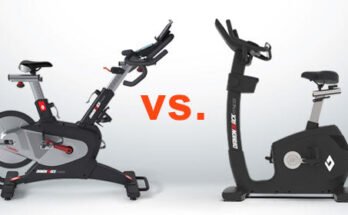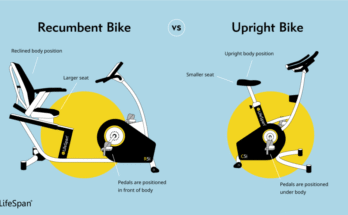When it comes to relaxation and muscle relief, massage therapy is a tried-and-true solution. Among the many massage techniques available, Shiatsu and Deep Tissue Massage are two of the most popular choices. But how do you know which one is right for you? Whether you’re looking to relieve stress, ease muscle tension, or improve overall well-being, understanding the key differences between these two styles of massage will help you make an informed decision.
In this article, we’ll compare Shiatsu vs Deep Tissue Massage, their benefits, techniques, and who they are best suited for. Let’s dive in!
What is Shiatsu Massage?
Shiatsu is a traditional Japanese therapeutic technique that involves applying rhythmic pressure to specific points on the body. Derived from the Japanese words “shi” (finger) and “atsu” (pressure), this massage focuses on restoring the balance of energy, or Qi (Chi), within the body. Shiatsu uses fingers, palms, and thumbs to apply pressure along energy pathways known as meridians.
The goal of Shiatsu is not only to relax the body but also to balance the body’s energy flow, promoting overall health and wellness. Shiatsu is typically performed on a mat on the floor, and the recipient remains fully clothed.
Benefits of Shiatsu Massage
-
Stress Relief: Shiatsu helps to reduce stress and anxiety by stimulating the body’s natural relaxation response.
-
Improved Energy Flow: By balancing energy within the body, Shiatsu can enhance vitality and overall well-being.
-
Pain Relief: It can help alleviate headaches, neck pain, back pain, and other muscular discomforts.
-
Enhanced Flexibility: The rhythmic pressure applied during a Shiatsu massage helps improve joint flexibility and muscle elasticity.
-
Improved Sleep: Regular Shiatsu sessions can promote better sleep patterns and combat insomnia.
What is Deep Tissue Massage?
Deep Tissue Massage is a technique that targets the deeper layers of muscle and connective tissue. This type of massage is often used to treat chronic pain and tension, focusing on the fascia, the connective tissue surrounding muscles, bones, and joints. The therapist uses slow, firm strokes and deep finger pressure to break down muscle adhesions (knots) and improve blood flow.
Unlike other types of massage, Deep Tissue is more intense and can sometimes cause discomfort, especially when working on tight muscle areas. It’s ideal for individuals with chronic pain or those who have muscle tension from physical activity or poor posture.
Benefits of Deep Tissue Massage
-
Pain Relief: Deep Tissue Massage is particularly effective at targeting chronic pain and muscle stiffness, especially in the neck, back, and shoulders.
-
Increased Blood Flow: The deep pressure helps to increase circulation, allowing oxygen and nutrients to reach muscle tissues more effectively.
-
Improved Posture: By releasing muscle tension and correcting imbalances, Deep Tissue Massage can improve posture over time.
-
Muscle Recovery: Athletes and individuals who engage in physical activity often benefit from Deep Tissue Massage to help reduce recovery time and prevent injury.
-
Stress Reduction: While intense, the technique can also promote deep relaxation and stress relief by addressing tension in key muscle areas.

Shiatsu vs Deep Tissue Massage: Key Differences
-
Technique:
-
Shiatsu: Uses rhythmic pressure, finger techniques, and stretching along energy pathways to promote balance.
-
Deep Tissue: Focuses on slow, deep pressure to target the deeper layers of muscle and connective tissue to release tension.
-
-
Purpose:
-
Shiatsu: Primarily aims to restore energy balance and relieve stress while addressing general muscle discomfort.
-
Deep Tissue: Targets chronic pain and muscle tension, focusing on deep tissue manipulation to alleviate long-term muscle stiffness.
-
-
Intensity:
-
Shiatsu: Generally gentle to moderate pressure, although it may feel intense at certain pressure points.
-
Deep Tissue: Intense pressure and may cause discomfort or soreness during or after the massage.
-
-
Suitability:
-
Shiatsu: Best for overall stress relief, relaxation, and energy balance. Ideal for those seeking a holistic approach to wellness.
-
Deep Tissue: Best for individuals with chronic pain, tight muscles, or athletes needing muscle recovery.
-
-
Experience:
-
Shiatsu: Performed fully clothed and often on the floor, providing a more holistic and energetic experience.
-
Deep Tissue: Typically performed on a massage table with oil, focusing on deeper muscular work and sometimes resulting in post-massage soreness.
-
Which Massage Should You Choose?
The choice between Shiatsu and Deep Tissue Massage ultimately depends on your goals and preferences. If you’re looking for a relaxing, non-invasive way to balance your body’s energy and reduce stress, Shiatsu may be the ideal choice for you. Its gentle yet effective techniques can help you feel relaxed and rejuvenated.
However, if you’re dealing with chronic muscle tension, pain, or recovering from an injury, Deep Tissue Massage may be the better option. It’s perfect for targeting those stubborn muscle knots and providing relief from deep-seated tension.
Conclusion
Both Shiatsu and Deep Tissue Massage offer unique benefits and can be incredibly effective in promoting relaxation, stress relief, and muscle recovery. Whether you prefer the gentle, energy-balancing approach of Shiatsu or the targeted, intense relief of Deep Tissue Massage, both therapies can enhance your overall well-being.
Before booking your next session, consider what your body needs—whether it’s stress relief, energy balance, or deep muscular relaxation. Whatever you choose, investing in a massage therapy routine is a great way to prioritize your health and happiness!
Shiatsu Massage vs. Other Body Massages | Video
 7 Best Magnetic Spin Bikes of 2025 ( Buying Guide )
7 Best Magnetic Spin Bikes of 2025 ( Buying Guide ) 7 Best Upright Exercise Bike Reviews In 2025 (Buying Guide)
7 Best Upright Exercise Bike Reviews In 2025 (Buying Guide) 10 Best Yoga Mat For Sweaty Hands In 2025
10 Best Yoga Mat For Sweaty Hands In 2025 6 Best Macebell In 2025 ( Top Picks With Buying Guide )
6 Best Macebell In 2025 ( Top Picks With Buying Guide )


